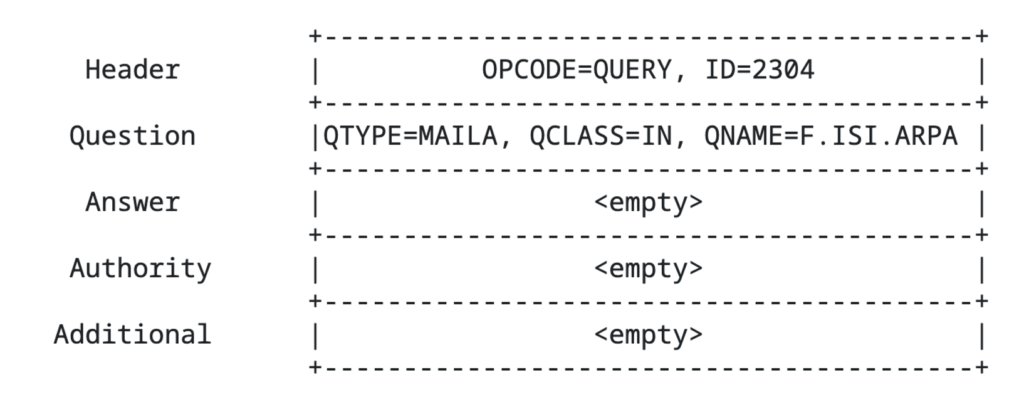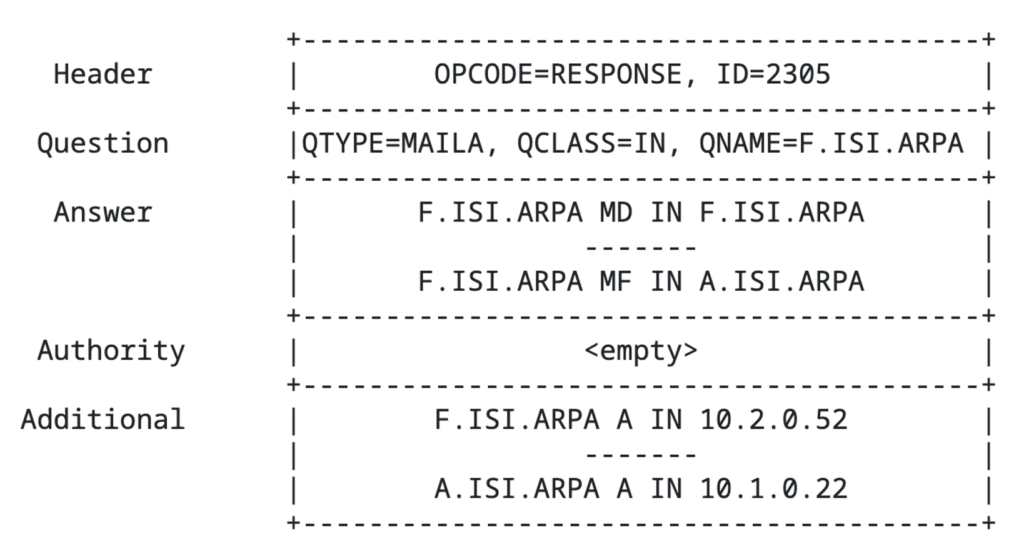MX Records: The Untold Story of Email
25/03/2025

By Alejandro Acosta, R+D Coordinator at LACNIC
Advances occur across the world of technology, and DNS and email are no exceptions. In this blog post, we’ll go back in time and explore the history behind certain DNS records, we’ll briefly examine how email systems worked before 1983, and we’ll acknowledge the powerful MX record, which revolutionized how email is handled on the Internet. It should be noted that we won’t use the concepts of MTA (Mail Transfer Agent) or MUA (Mail User Agent), as these mnemonics were introduced years after the MX record itself.
Email was very different back then from what we know today.

1. Early email systems appeared in the 1960s and 1970s, developed at universities and research centers. One of the first was MIT’s ‘CTSS Mail’ program, which allowed users to send messages to others, but *only* on the same server.
2. Formats and Protocols (1971-1982). At this time, there was no standardized protocol for email. Instead, each system used its own format and methods for sending and receiving messages. This meant that messages sent from one system to another might not be compatible.
3. Ray Tomlinson’s work in 1971 made history by implementing the first email system capable of sending messages between different computers on the ARPANET. Tomlinson introduced the use of the ‘@’ symbol to separate the username from the hostname, a format still in use today. Fun fact: There are many stories about why the ‘@’ symbol was chosen to separate the username and hostname. Part of the reason is because ‘@’ is read as ‘at,’ meaning that luisalfonso@lacnic.net is read as Luis Alfonso at lacnic.net
4. In 1983, the introduction of SMTP (Simple Mail Transfer Protocol) established a standard that allowed more efficient and universal communication between different email systems, ushering in a new era in digital messaging.
Which DNS records were used before MX?
Before MX records were introduced, MD (Mail Delivery) and MF (Mail Forwarding) records were used to connect mail agents in the Domain Name System (DNS). The original specification used these MD and MF records to connect mail agents.
Key aspects of MD and MF records:
- MAILA queries requested both MD and MF records.
- MD records identified hosts that were expected to have the recipient’s mailbox.
- MF records identified hosts that were expected to act as intermediaries and forward mail to the final destination.
The problem with using separate MD and MF records was that a mail agent performing a MAILA query couldn’t effectively use the cache, as this could only store results for either an MD or an MF query, but not both. The solution was to replace MD and MF with a new type of record —the MX record— which combines information from MD and MF records into a single type.
F.ISI.ARPA A IN 10.2.0.52
F.ISI.ARPA MD IN F.ISI.ARPA
XXXX.ARPA CNAME IN F.ISI.ARPA
XXXX.ARPA MF IN A.ISI.ARPAExample configuration excerpt taken from RFC 882.
What are DNS MAILA queries?
MAILA queries were DNS queries used to retrieve both MD and MF records from the Domain Name System.
Key aspects of MAILA queries:
- They requested both types of records, MD and MF.
- MD records identified hosts that were expected to have the recipient’s mailbox.
- MF records specified hosts that were expected to act as intermediaries.
However, using separate records presented a caching problem. Since a mail agent couldn’t rely on the cache having both records, it often had to query the authoritative servers directly. To solve this issue, MX records were introduced, which combine the information into a single record type.

Example of a DNS MAILA query

Example of a DNS MAILA response
When were MD and MF records used?
MD and MF records were used between 1983 and 1986. Here’s a brief timeline:
- November 1983: RFCs 882 and 883 are published, defining the Domain Name System and specifying the use of MD and MF records.
- November 1985: Craig Partridge completes RFC 974, which addresses an error in MD/MF records.
- January 1986: RFC 973 is published, introducing the MX record and replacing MD and MF records.
What were the errors/issues with MD and MF records?
Back then, the main problem with MD and MF records was that a mail agent performing a MAILA query couldn’t use the cache efficiently, as it could only store one record type —either MD or MF— not both. This meant that each routing decision required querying authoritative servers, which is what led to the creation of the MX record.
Example of mail delivery by an agent (1983-1986)
Before MX records, MAILA queries requested MD and MF records.
Example:
- A mail agent wants to send an email to user@example.com.
- The agent issues a DNS MAILA query to example.com.
- The DNS server might respond with:
- An MD record specifying the host responsible for final delivery.
- An MF record specifying a host that will forward the email.
- The mail agent uses this information to route the email.
Although not explicitly stated, the mail program would likely have first attempted to deliver the email to the MD, and if that failed, it would have tried the MF.
What was the mail system like prior to 1983?
Before 1983, the mail system was based on UUCP (UNIX-to-UNIX Copy Protocol), which was the backbone of a store-and-forward network. Users had to manually specify mail routes (the format was hosta!hostb!user) which became problematic as USENET grew.
An Attempt in the 1990s
In July 1990, RFC 1168, titled ‘Intermail and Commercial Mail Relay Services,’ described a system for commercial users to send email over the Internet at a time when network access was limited and networks were fragmented into isolated ‘islands’. The document proposed Intermail, a service that acted as a bridge to relay email between commercial and academic networks, solving a temporary connectivity issue.
However, its success was limited. With the rapid expansion of the Internet and the adoption of the SMTP protocol as a universal standard, systems like Intermail became obsolete by the mid-1990s. Today, RFC 1168 is a landmark document that reflects the challenges and creative solutions of the early years of email and lays the foundation for modern global communication.
What is the mail system like today?
Today, mail forwarders (MTAs) use MX records to determine how to route messages. The agent queries the destination domain’s MX records using DNS (Querytype=MX) and attempts delivery in order of preference: the lower the preference, the higher the priority.
Conclusions
MD and MF records played a key role in mail routing before the introduction of MX records. However, their separate use led to caching and efficiency issues. The introduction of the MX record solved these problems by combining the information into a single record type, simplifying mail routing within the Domain Name System.
Did you know this interesting story? Will MX records change in the future?
References:
- Thread on the IH Mailing List: Converging on MX Use https://elists.isoc.org/pipermail/internet-history/2025-February/010241.html
- https://datatracker.ietf.org/doc/html/rfc973
- https://datatracker.ietf.org/doc/html/rfc974
- https://www.rfc-editor.org/rfc/rfc882.html
The views expressed by the authors of this blog are their own and do not necessarily reflect the views of LACNIC.